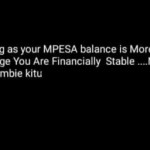Day 1 to 11
The follicle -stimulating hormone
stimulates the growth and development of à primordial follicle to the Graafian follicle stage. under the influence of the (luteinising hormone) from the pitutary gland, the follicle cells sorrounding the ovum secrete oestrogen. Oestrogen stimulates the growth and thickening of the endometrium of the uterus.
Day 12 to 14
The Graafian follicle complètes its development as it moves towards the surface of the ovary. A sudden increase of FSH and LH usually on the 14th day brings about ovulation ,that is ,the Graafian follicle bursts and releases the ovum which enters an oviduct
Day 15 to 25
LH now stimulates the emptied Graafian follicle to develop into a gland called corpus leteum (yellow body). It secrets the hormone progestrone which continues the development of the endometrium with a build up of capillaires and mucous glands. The increasing levels of progestrone in the blood inhibits FSH and LH secretion by the pitutary gland, in what is referred to as a negative feedback mechanism.
Day 26 to 27
If fertilisation taken place, the corpus luteum starts to degenerate, and so the secretion of progestrone decreases. The low level of this hormone result in the breakdowm of the endometrium. The ovum then dies and degenerates.
Day 28
Menstruation starts. The break down products of the degenerating endometrium -mainly blood and mucous -are expelled from the uterus and through the vigina as a bloody discharge in the next 4-5 days.
A new menstrual cycle begins at the onset of menstruation,that is, with the drop in progestrone level in the blood the pituitary now resumes its secretion of FSH. A New primordial follicle stage, in the other ovary.
Hormornal activity during preganancy and at birth
-During thé early part of pregnancy,the placenta secretes HCG which sustains the corpus leteum that therefore continues to secrete progestrone.
-During most of preganancy, progestrone and oestrogen are secreted in increasing amount by the placenta itself. These hormones sustain the endometrium. They also stimulate an increased growth of the mammary gland. FSH and LH secretion is inhibited. Progestrone inhibits contractions of the uterine wall and lactation by the mammary gland.
-Towards the end of gestation ,the level of oestrogen and progestrone in the blood reaches its peak. At the end of gestation ,around the 40th week,there is a sudden drop in the level of these two hormones. Consequently, the endometrium can no longer be sustained This sets off the changes which bring about parturition(birth)
-During birth, the placenta releases another hormone called (relaxin) which dilates the cervix and relaxes the elastin fibres that hold together the pubic bones of the pelvis.
Thus, the pelvic canal can be widened to permit the passage of the baby as it is pushed out of the uterus and vigina. It is possible that Some stimulus from the foetus itself also triggers off parturition.
The mother's posteriori pituitary gland releases the hormone (oxytocin), which brings about rhythmicy muscular contraction of the uterine wall and so the baby is gradually pushed out of the mother's body through the cervix and vagina.



You must be logged in to post a comment.